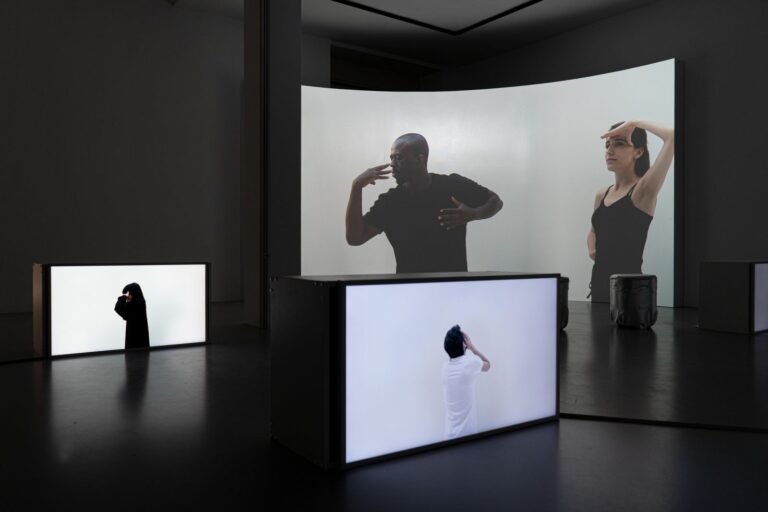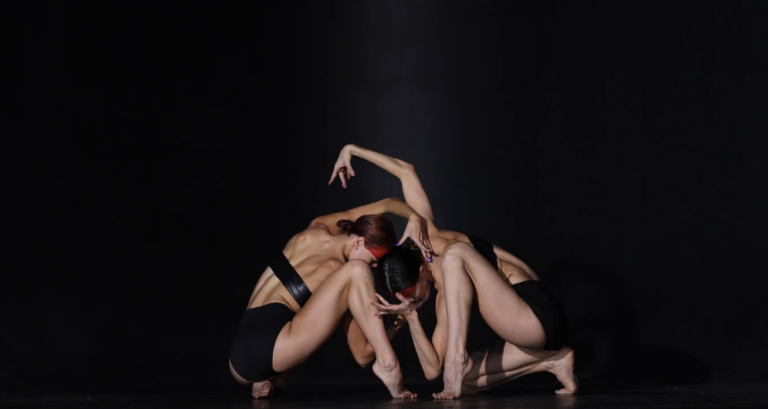I believe that NFTs can really help performance artists make more money. With NFTs, artists can turn their live shows or recordings into special digital items that people can buy. This means artists can sell their performances to fans all around the world. The cool thing is, every time someone sells one of these digital items to someone else, the artist gets more money too. It’s like a way for fans to support their favorite artists directly. Artists can also use NFTs to raise money for new projects or tours, and they can create digital stuff like collectibles or merchandise that fans can buy. However, we need to be careful about some things, like making sure everyone involved is treated fairly, and thinking about the impact on the environment from using this technology.
Turning performances into NFTs is making them into digital treasures that people can buy. This can change how audiences help and enjoy performance art. Fans can buy these digital treasures and own a piece of the performance, kind of like having a special ticket. When people sell these digital items to others, the artists can keep getting support. It’s a way for fans to connect directly with their favorite artists and help them out.
NFTs can be digital time capsules for performance art, helping to keep them safe and remembered. By turning performances into NFTs, artists can make sure their work lasts a long time, even if it’s something that happened only for a short moment. These digital treasures can be owned by people who appreciate the art, and this ownership can be passed on to others over time. It’s a way to give ephemeral performances a lasting legacy so that people can remember and enjoy them for years to come.
When performance artists use NFTs, they should think about who owns their work, how copyright works, and who can see it. It’s important for artists to make sure they have control over what happens to their performances and that they get a fair share when their digital treasures are sold. Artists should also consider who can access their work and if it respects their wishes.
I tried to google some real-world examples of how performance artists have monetized their work. Here are some interesting cases:
- Marina Abramović: The renowned performance artist launched the Marina Abramović Institute (MAI) in 2013, which offers memberships and workshops to the public, generating income and fostering a community of supporters.
- Amanda Palmer: Amanda Palmer, a musician and performance artist, used crowdfunding on Patreon to connect with her fans and fund her creative projects, exceeding her initial goals.
- Ragnar Kjartansson: This Icelandic artist combines performance and music in his work. He has received commissions from institutions like the Hirshhorn Museum and Sculpture Garden in Washington, D.C., for live performances.
- Meow Wolf: This arts and entertainment collective creates immersive, interactive experiences that include performance art elements. They generate revenue from ticket sales and merchandise at their installations.
- Taylor Mac: Known for epic, immersive performances, Taylor Mac has earned income from ticket sales and received support from foundations and institutions.
Also, there were mostly examples of US dance troupes with interesting ways to monetize their performances:
- Alvin Ailey American Dance Theater: This renowned dance company offers a combination of ticket sales for live performances, touring internationally, and educational programs, including workshops and masterclasses.
- BalletX: BalletX, a contemporary ballet company, offers virtual memberships that provide exclusive access to live-streamed performances and behind-the-scenes content for a subscription fee.
- Pilobolus: Known for their creative and collaborative approach to modern dance, Pilobolus has diversified their income through live performances, dance workshops, and collaborations with corporate events and advertising.
- Complexions Contemporary Ballet: This company offers both live and virtual performances, including online masterclasses and workshops for dancers and enthusiasts, generating revenue from ticket sales and class fees.
- Hiplet Ballerinas: Hiplet is a fusion of ballet and hip-hop. The Hiplet Ballerinas group offers both live and virtual performances, workshops, and merchandise sales to monetize their unique style of dance.
Authenticity and ownership are like superheroes for performance art in the world of NFTs. When artists make their performances into NFTs, it’s like putting a special mark to show it’s real and unique. This mark makes sure people know it’s the real deal, like an autograph. Plus, it helps artists keep track of who owns their digital treasures. So, it’s like saying, “Hey, this is a genuine piece of my performance, and you are the special owner of it!” This way, everyone knows what’s real, and artists can feel good about their fans enjoying their work in a special way.
NFTs have certain challenges. Firstly, their creation and trading process use a lot of energy, contributing to environmental concerns due to the substantial computing power needed for blockchain transactions. Additionally, NFTs might not be accessible to everyone because of the costs involved, limiting opportunities for certain individuals and communities. The decentralized nature of blockchain makes it challenging to prevent fraud, exposing both buyers and sellers to risks. The lack of clear regulations in the NFT space makes navigation difficult for individuals and organizations, potentially jeopardizing their interests. NFTs also have limited functionality, not being suitable for all types of digital media. The market for NFTs is still new and volatile, with prices changing rapidly, posing challenges for informed decision-making and risking financial losses. Lastly, cultural appropriation issues have arisen when artists use Indigenous cultural symbols in NFTs without proper permission or compensation.
Right now, it seems like NFTs could have a big impact to performance art. They are like new tools that artists can use to share and value their work in a special way. Whether NFTs in performance art are a passing trend or a transformative force could depend on factors like technological developments, cultural shifts, and the evolution of the NFT market. However, we still need to find NFTs “Killer App” for performance artists to make it a breakthrough innovation. I don’t know what that Killer App could be.
NFT를 통해 예술가들은 무대 공연이나 녹음을 특별한 디지털 아이템으로 변환하여 판매함으로써 수익을 증가시킬 수 있다고 믿습니다. NFT를 사용하면 예술가들은 전 세계 팬들에게 자신의 공연을 판매할 수 있습니다. 특히 이 디지털 아이템을 다른 사람에게 판매할 때마다 예술가는 추가 수익을 얻게 됩니다. 이는 팬들이 직접 즐겨 찾는 예술가들을 지원하는 방법으로, 그들이 직접 아티스트를 지원할 수 있게 하는 것입니다. 또한 예술가들은 NFT를 사용하여 새로운 프로젝트나 투어를 위한 자금을 모을 수 있으며, 팬들이 구매할 수 있는 컬렉터 아이템이나 굿즈를 만들 수도 있습니다. 그러나 모든 관계자가 공정하게 대우받도록 하는 등 몇 가지 주의할 점이 있으며, 이 기술 사용으로 인한 환경 영향에 대한 고려도 필요합니다.
NFT를 통해 공연을 디지털 보물로 만들면 이를 구매할 수 있는 디지털 티켓처럼 관객이 소유할 수 있게 됩니다. 팬들은 이러한 디지털 보물을 구매하여 공연의 일부를 소유하게 되며, 다른 사람에게 이 디지털 아이템을 판매할 때마다 예술가는 계속해서 지원을 받을 수 있습니다. 이는 팬들이 자신이 좋아하는 아티스트와 직접적으로 연결되어 도움을 줄 수 있는 방법입니다.
NFT는 공연 아트의 디지털 타임 캡슐이 될 수 있어서 그들을 안전하게 보존하고 기억되게 도와줄 수 있습니다. 예술가들이 공연을 NFT로 변환함으로써, 그 작품이 짧은 순간이라도 오랜 시간동안 지속되도록 할 수 있습니다. 이러한 디지털 보물은 그 예술을 감상하는 사람들에 의해 소유되며, 이 소유권은 시간이 지나면서 다른 사람에게 전해질 수 있습니다. 이는 일종의 비효과적인 공연에도 오랜 기간 동안 기록된 유산을 제공하는 방법입니다.
NFT를 사용하는 공연 아티스트는 자신의 작품을 누가 소유하며, 저작권이 어떻게 작동하며, 누가 볼 수 있는지에 대해 고려해야 합니다. 예술가들은 자신의 공연에 대해 어떤 일이 일어나는지에 대한 통제권을 가지고 있고, 디지털 보물이 판매될 때 공정한 분배를 받을 수 있도록 하는 것이 중요합니다. 또한 예술가들은 작품에 누가 접근할 수 있는지와 그것이 자신의 의도를 존중하는지를 고려해야 합니다.
실제로 성공적으로 작업을 상업화한 성공적인 사례들에 대한 구글링을 시도했으며, 몇 가지 흥미로운 사례를 발견했습니다:
• Marina Abramović: 2013년에 Marina Abramović은 Marina Abramović Institute (MAI)를 설립하여 이를 통해 일반인에게 회원 자격과 워크샵을 제공하여 수입을 창출하고 지지자들의 커뮤니티를 육성하고 있습니다.
• Amanda Palmer: 음악가이자 퍼포먼스 아티스트인 Amanda Palmer는 팬들과 연결되어 창의적인 프로젝트를 자금 조달하기 위해 Patreon에서 크라우드펀딩을 활용하여 초기 목표를 초과했습니다.
• Ragnar Kjartansson: 이 아이슬란드 예술가는 작품에서 퍼포먼스와 음악을 결합하고 있으며, Washington, D.C.의 Hirshhorn Museum and Sculpture Garden에서의 라이브 퍼포먼스를 비롯한 다양한 의뢰를 받고 있습니다.
• Meow Wolf: 이 아트 및 엔터테인먼트 콜렉티브는 퍼포먼스 아트 요소를 포함한 몰입형 대화형 경험을 창조하고 있으며, 이로부터 티켓 판매 및 설치물에서의 굿즈 수익을 창출하고 있습니다.
• Taylor Mac: 대형이고 몰입적인 퍼포먼스로 알려진 Taylor Mac은 티켓 판매에서 소득을 올리고, 재단 및 기관의 지원을 받고 있습니다
.
또한 미국 댄스 트룹들이 작품을 상업화하는 흥미로운 방법들도 검색해보았습니다:
• Alvin Ailey American Dance Theater: 이 유명한 댄스 회사는 라이브 퍼포먼스의 티켓 판매와 국제 투어, 워크샵 및 마스터클래스를 포함한 교육 프로그램의 결합을 통해 수익을 창출하고 있습니다.
• BalletX: 현대 발레 회사인 BalletX는 구독료를 지불하고 라이브 스트리밍된 퍼포먼스와 뒷 이야기 컨텐츠에 독점적으로 액세스할 수 있는 가상 멤버십을 제공하고 있습니다.
• Pilobolus: 현대 댄스에 대한 창의적이고 협력적인 접근으로 알려진 Pilobolus는 라이브 퍼포먼스, 댄스 워크샵, 기업 행사 및 광고와의 협업을 통해 수익을 다양화하고 있습니다.
• Complexions Contemporary Ballet: 이 회사는 라이브 및 가상 퍼포먼스, 무용가 및 열렬한 팬을 위한 온라인 마스터클래스와 워크샵을 포함한 수익을 티켓 판매 및 수업료에서 창출하고 있습니다.
• Hiplet Ballerinas: Hiplet은 발레와 힙합을 접목한 것으로, Hiplet Ballerinas 그룹은 라이브 및 가상 퍼포먼스, 워크샵 및 굿즈 판매를 통해 고유한 댄스 스타일을 상업화하고 있습니다.
NFT가 성능 아트에 큰 영향을 미칠 것으로 보입니다. 이들은 예술가들이 자신의 작업을 특별한 방식으로 공유하고 가치를 부여할 수 있는 새로운 도구들입니다. NFT가 성능 아트에서 일시적인 트렌드인지 또는 혁신적인 힘인지는 기술의 발전, 문화적 변화 및 NFT 시장의 진화와 같은 여러 요인에 의존할 수 있습니다. 그러나 아직까지 NFT를 사용하는 성능 아트에게 “킬러 앱”을 찾아야 한다는 도전이 남아 있습니다. 어떤 킬러 앱이 될 수 있을지는 알 수 없습니다.

